Managerial Economics Assessment
VerifiedAdded on 2022/08/22
|10
|1565
|19
AI Summary
Contribute Materials
Your contribution can guide someone’s learning journey. Share your
documents today.
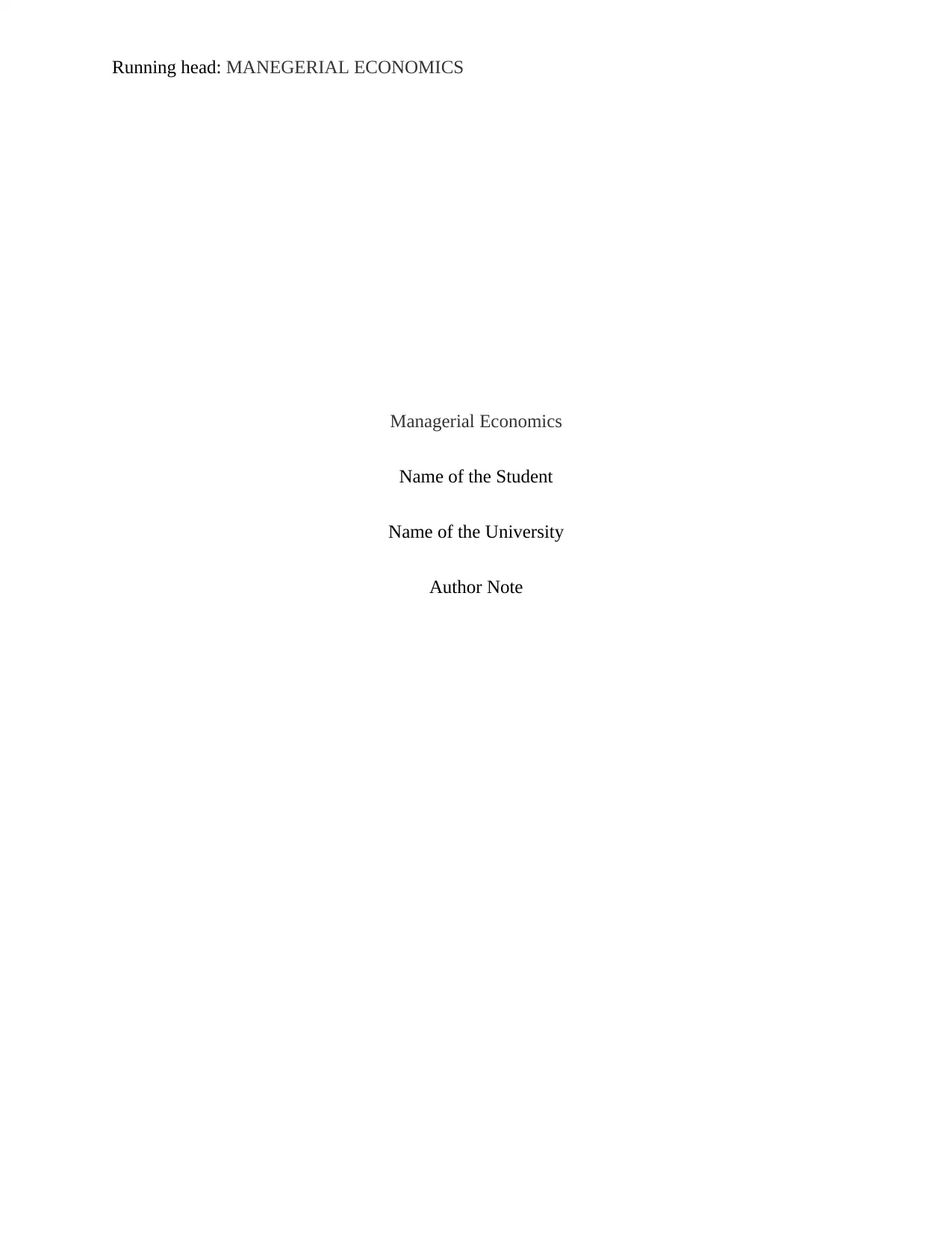
Running head: MANEGERIAL ECONOMICS
Managerial Economics
Name of the Student
Name of the University
Author Note
Managerial Economics
Name of the Student
Name of the University
Author Note
Secure Best Marks with AI Grader
Need help grading? Try our AI Grader for instant feedback on your assignments.
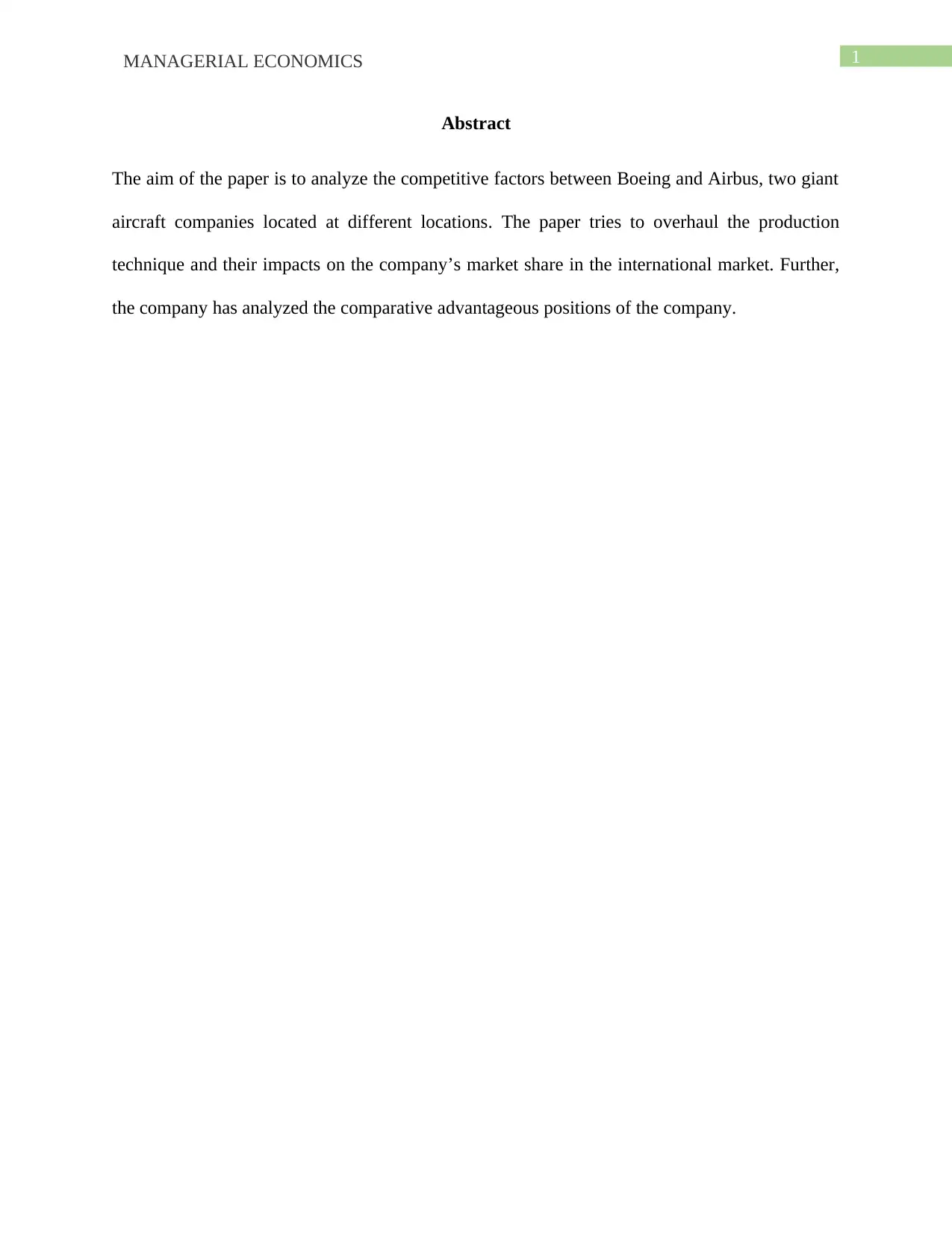
1MANAGERIAL ECONOMICS
Abstract
The aim of the paper is to analyze the competitive factors between Boeing and Airbus, two giant
aircraft companies located at different locations. The paper tries to overhaul the production
technique and their impacts on the company’s market share in the international market. Further,
the company has analyzed the comparative advantageous positions of the company.
Abstract
The aim of the paper is to analyze the competitive factors between Boeing and Airbus, two giant
aircraft companies located at different locations. The paper tries to overhaul the production
technique and their impacts on the company’s market share in the international market. Further,
the company has analyzed the comparative advantageous positions of the company.
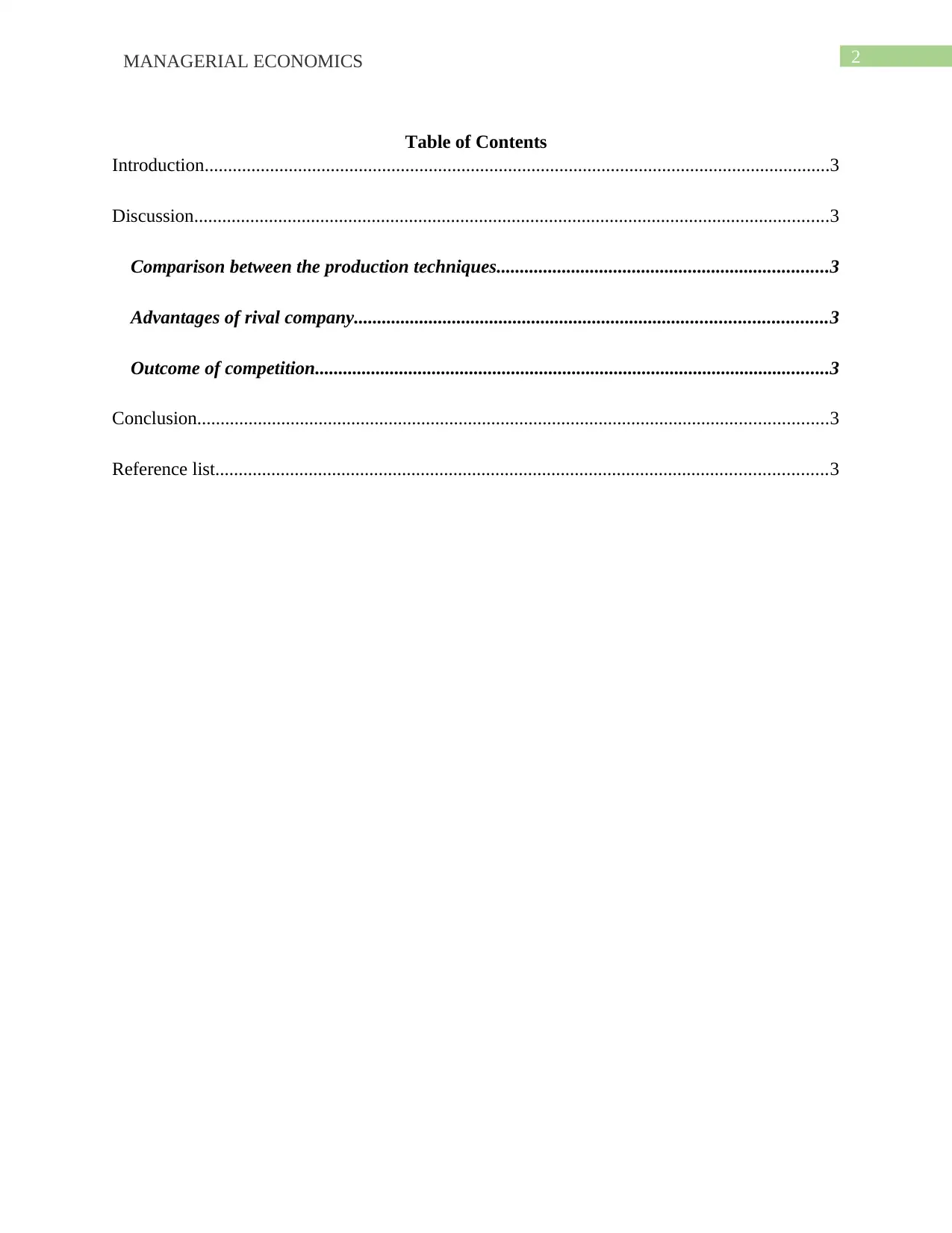
2MANAGERIAL ECONOMICS
Table of Contents
Introduction......................................................................................................................................3
Discussion........................................................................................................................................3
Comparison between the production techniques.......................................................................3
Advantages of rival company.....................................................................................................3
Outcome of competition..............................................................................................................3
Conclusion.......................................................................................................................................3
Reference list...................................................................................................................................3
Table of Contents
Introduction......................................................................................................................................3
Discussion........................................................................................................................................3
Comparison between the production techniques.......................................................................3
Advantages of rival company.....................................................................................................3
Outcome of competition..............................................................................................................3
Conclusion.......................................................................................................................................3
Reference list...................................................................................................................................3
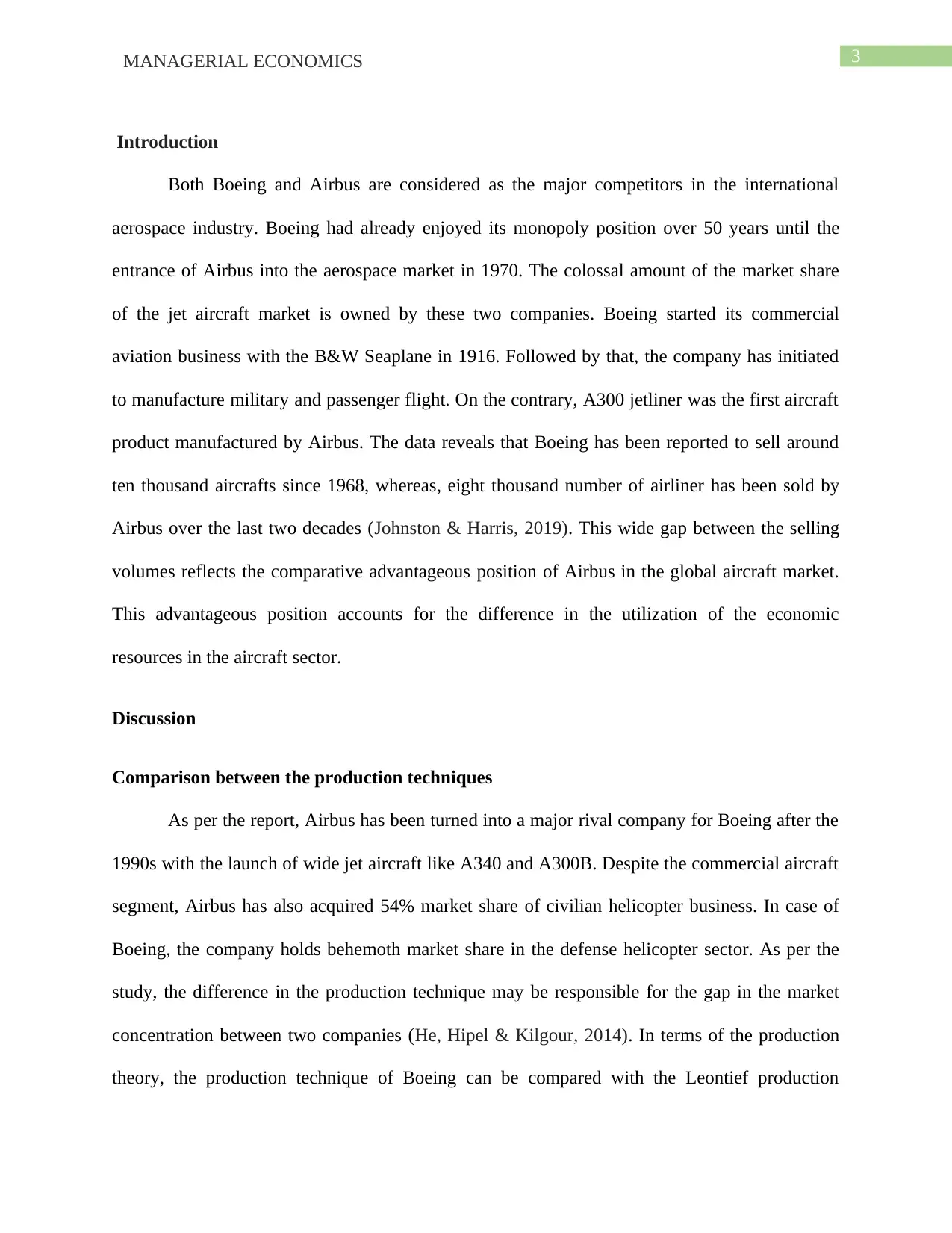
3MANAGERIAL ECONOMICS
Introduction
Both Boeing and Airbus are considered as the major competitors in the international
aerospace industry. Boeing had already enjoyed its monopoly position over 50 years until the
entrance of Airbus into the aerospace market in 1970. The colossal amount of the market share
of the jet aircraft market is owned by these two companies. Boeing started its commercial
aviation business with the B&W Seaplane in 1916. Followed by that, the company has initiated
to manufacture military and passenger flight. On the contrary, A300 jetliner was the first aircraft
product manufactured by Airbus. The data reveals that Boeing has been reported to sell around
ten thousand aircrafts since 1968, whereas, eight thousand number of airliner has been sold by
Airbus over the last two decades (Johnston & Harris, 2019). This wide gap between the selling
volumes reflects the comparative advantageous position of Airbus in the global aircraft market.
This advantageous position accounts for the difference in the utilization of the economic
resources in the aircraft sector.
Discussion
Comparison between the production techniques
As per the report, Airbus has been turned into a major rival company for Boeing after the
1990s with the launch of wide jet aircraft like A340 and A300B. Despite the commercial aircraft
segment, Airbus has also acquired 54% market share of civilian helicopter business. In case of
Boeing, the company holds behemoth market share in the defense helicopter sector. As per the
study, the difference in the production technique may be responsible for the gap in the market
concentration between two companies (He, Hipel & Kilgour, 2014). In terms of the production
theory, the production technique of Boeing can be compared with the Leontief production
Introduction
Both Boeing and Airbus are considered as the major competitors in the international
aerospace industry. Boeing had already enjoyed its monopoly position over 50 years until the
entrance of Airbus into the aerospace market in 1970. The colossal amount of the market share
of the jet aircraft market is owned by these two companies. Boeing started its commercial
aviation business with the B&W Seaplane in 1916. Followed by that, the company has initiated
to manufacture military and passenger flight. On the contrary, A300 jetliner was the first aircraft
product manufactured by Airbus. The data reveals that Boeing has been reported to sell around
ten thousand aircrafts since 1968, whereas, eight thousand number of airliner has been sold by
Airbus over the last two decades (Johnston & Harris, 2019). This wide gap between the selling
volumes reflects the comparative advantageous position of Airbus in the global aircraft market.
This advantageous position accounts for the difference in the utilization of the economic
resources in the aircraft sector.
Discussion
Comparison between the production techniques
As per the report, Airbus has been turned into a major rival company for Boeing after the
1990s with the launch of wide jet aircraft like A340 and A300B. Despite the commercial aircraft
segment, Airbus has also acquired 54% market share of civilian helicopter business. In case of
Boeing, the company holds behemoth market share in the defense helicopter sector. As per the
study, the difference in the production technique may be responsible for the gap in the market
concentration between two companies (He, Hipel & Kilgour, 2014). In terms of the production
theory, the production technique of Boeing can be compared with the Leontief production
Secure Best Marks with AI Grader
Need help grading? Try our AI Grader for instant feedback on your assignments.
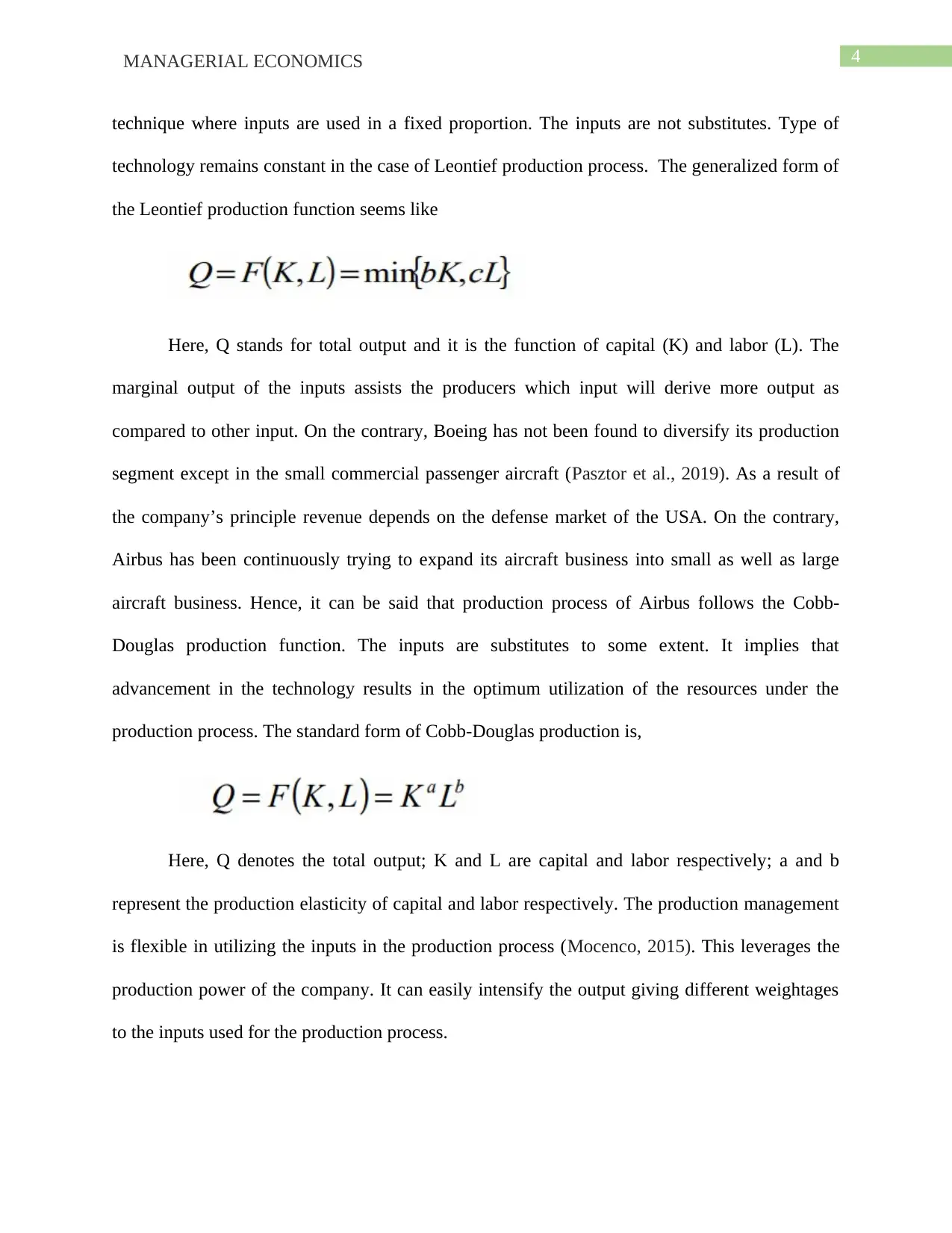
4MANAGERIAL ECONOMICS
technique where inputs are used in a fixed proportion. The inputs are not substitutes. Type of
technology remains constant in the case of Leontief production process. The generalized form of
the Leontief production function seems like
Here, Q stands for total output and it is the function of capital (K) and labor (L). The
marginal output of the inputs assists the producers which input will derive more output as
compared to other input. On the contrary, Boeing has not been found to diversify its production
segment except in the small commercial passenger aircraft (Pasztor et al., 2019). As a result of
the company’s principle revenue depends on the defense market of the USA. On the contrary,
Airbus has been continuously trying to expand its aircraft business into small as well as large
aircraft business. Hence, it can be said that production process of Airbus follows the Cobb-
Douglas production function. The inputs are substitutes to some extent. It implies that
advancement in the technology results in the optimum utilization of the resources under the
production process. The standard form of Cobb-Douglas production is,
Here, Q denotes the total output; K and L are capital and labor respectively; a and b
represent the production elasticity of capital and labor respectively. The production management
is flexible in utilizing the inputs in the production process (Mocenco, 2015). This leverages the
production power of the company. It can easily intensify the output giving different weightages
to the inputs used for the production process.
technique where inputs are used in a fixed proportion. The inputs are not substitutes. Type of
technology remains constant in the case of Leontief production process. The generalized form of
the Leontief production function seems like
Here, Q stands for total output and it is the function of capital (K) and labor (L). The
marginal output of the inputs assists the producers which input will derive more output as
compared to other input. On the contrary, Boeing has not been found to diversify its production
segment except in the small commercial passenger aircraft (Pasztor et al., 2019). As a result of
the company’s principle revenue depends on the defense market of the USA. On the contrary,
Airbus has been continuously trying to expand its aircraft business into small as well as large
aircraft business. Hence, it can be said that production process of Airbus follows the Cobb-
Douglas production function. The inputs are substitutes to some extent. It implies that
advancement in the technology results in the optimum utilization of the resources under the
production process. The standard form of Cobb-Douglas production is,
Here, Q denotes the total output; K and L are capital and labor respectively; a and b
represent the production elasticity of capital and labor respectively. The production management
is flexible in utilizing the inputs in the production process (Mocenco, 2015). This leverages the
production power of the company. It can easily intensify the output giving different weightages
to the inputs used for the production process.
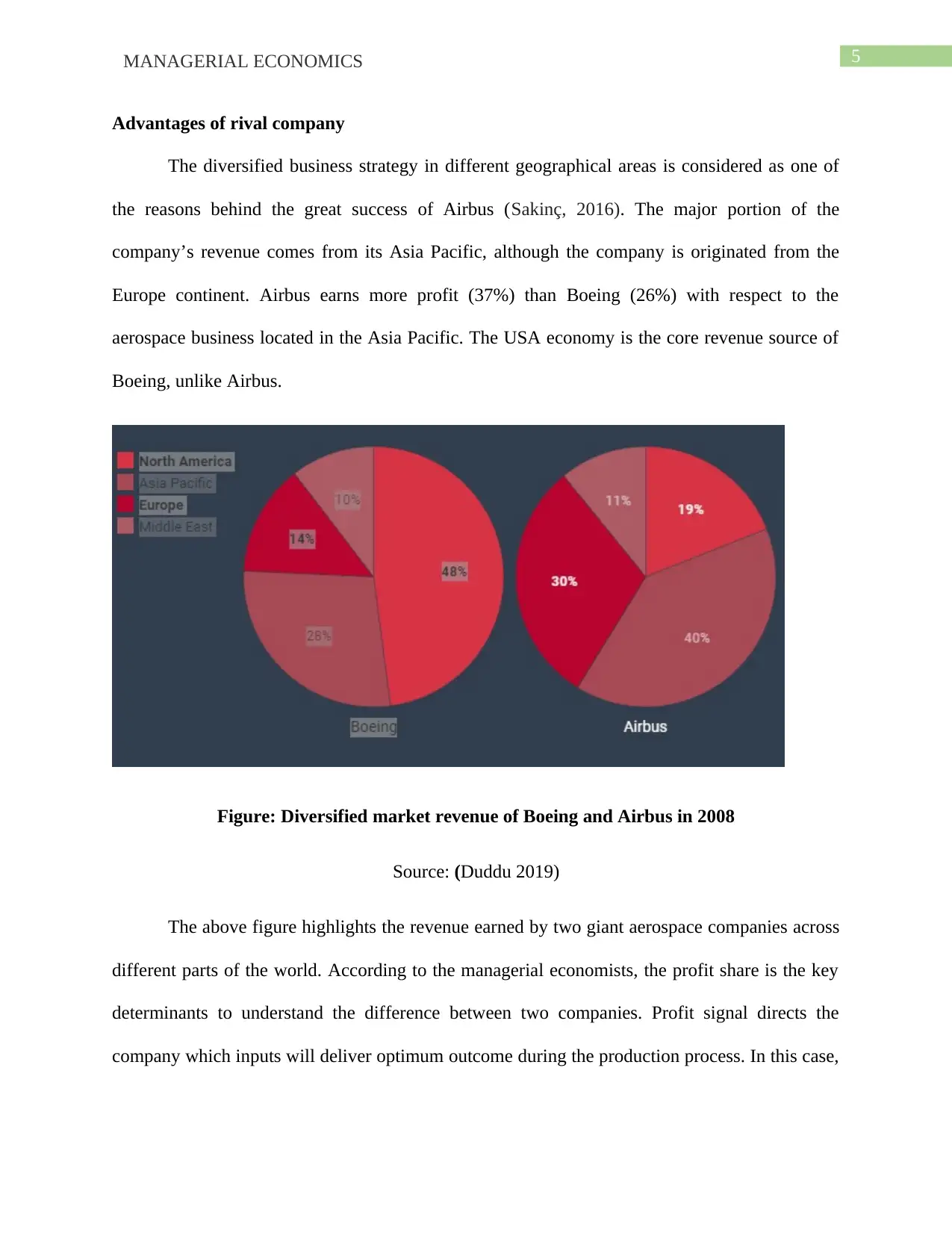
5MANAGERIAL ECONOMICS
Advantages of rival company
The diversified business strategy in different geographical areas is considered as one of
the reasons behind the great success of Airbus (Sakinç, 2016). The major portion of the
company’s revenue comes from its Asia Pacific, although the company is originated from the
Europe continent. Airbus earns more profit (37%) than Boeing (26%) with respect to the
aerospace business located in the Asia Pacific. The USA economy is the core revenue source of
Boeing, unlike Airbus.
Figure: Diversified market revenue of Boeing and Airbus in 2008
Source: (Duddu 2019)
The above figure highlights the revenue earned by two giant aerospace companies across
different parts of the world. According to the managerial economists, the profit share is the key
determinants to understand the difference between two companies. Profit signal directs the
company which inputs will deliver optimum outcome during the production process. In this case,
Advantages of rival company
The diversified business strategy in different geographical areas is considered as one of
the reasons behind the great success of Airbus (Sakinç, 2016). The major portion of the
company’s revenue comes from its Asia Pacific, although the company is originated from the
Europe continent. Airbus earns more profit (37%) than Boeing (26%) with respect to the
aerospace business located in the Asia Pacific. The USA economy is the core revenue source of
Boeing, unlike Airbus.
Figure: Diversified market revenue of Boeing and Airbus in 2008
Source: (Duddu 2019)
The above figure highlights the revenue earned by two giant aerospace companies across
different parts of the world. According to the managerial economists, the profit share is the key
determinants to understand the difference between two companies. Profit signal directs the
company which inputs will deliver optimum outcome during the production process. In this case,
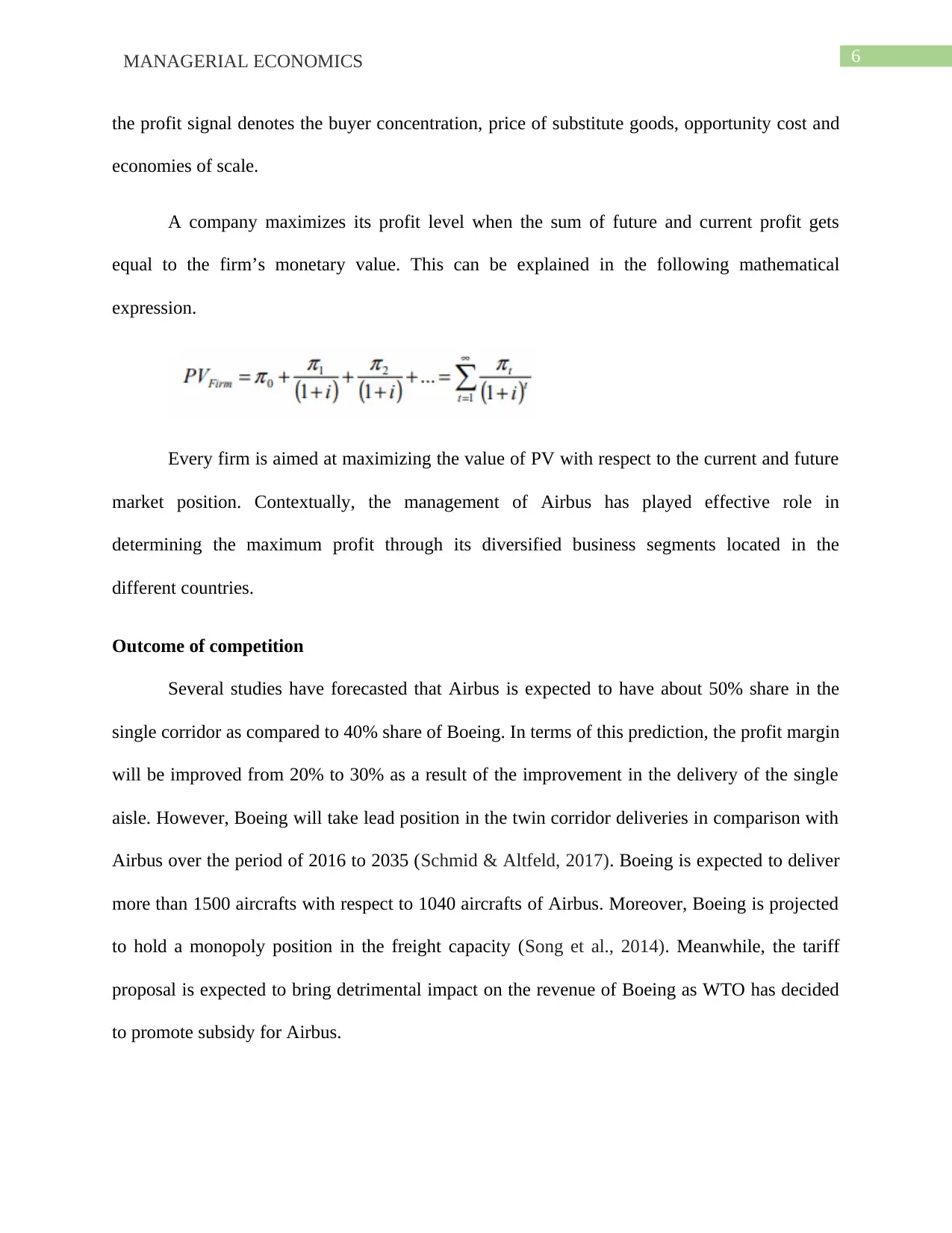
6MANAGERIAL ECONOMICS
the profit signal denotes the buyer concentration, price of substitute goods, opportunity cost and
economies of scale.
A company maximizes its profit level when the sum of future and current profit gets
equal to the firm’s monetary value. This can be explained in the following mathematical
expression.
Every firm is aimed at maximizing the value of PV with respect to the current and future
market position. Contextually, the management of Airbus has played effective role in
determining the maximum profit through its diversified business segments located in the
different countries.
Outcome of competition
Several studies have forecasted that Airbus is expected to have about 50% share in the
single corridor as compared to 40% share of Boeing. In terms of this prediction, the profit margin
will be improved from 20% to 30% as a result of the improvement in the delivery of the single
aisle. However, Boeing will take lead position in the twin corridor deliveries in comparison with
Airbus over the period of 2016 to 2035 (Schmid & Altfeld, 2017). Boeing is expected to deliver
more than 1500 aircrafts with respect to 1040 aircrafts of Airbus. Moreover, Boeing is projected
to hold a monopoly position in the freight capacity (Song et al., 2014). Meanwhile, the tariff
proposal is expected to bring detrimental impact on the revenue of Boeing as WTO has decided
to promote subsidy for Airbus.
the profit signal denotes the buyer concentration, price of substitute goods, opportunity cost and
economies of scale.
A company maximizes its profit level when the sum of future and current profit gets
equal to the firm’s monetary value. This can be explained in the following mathematical
expression.
Every firm is aimed at maximizing the value of PV with respect to the current and future
market position. Contextually, the management of Airbus has played effective role in
determining the maximum profit through its diversified business segments located in the
different countries.
Outcome of competition
Several studies have forecasted that Airbus is expected to have about 50% share in the
single corridor as compared to 40% share of Boeing. In terms of this prediction, the profit margin
will be improved from 20% to 30% as a result of the improvement in the delivery of the single
aisle. However, Boeing will take lead position in the twin corridor deliveries in comparison with
Airbus over the period of 2016 to 2035 (Schmid & Altfeld, 2017). Boeing is expected to deliver
more than 1500 aircrafts with respect to 1040 aircrafts of Airbus. Moreover, Boeing is projected
to hold a monopoly position in the freight capacity (Song et al., 2014). Meanwhile, the tariff
proposal is expected to bring detrimental impact on the revenue of Boeing as WTO has decided
to promote subsidy for Airbus.
Paraphrase This Document
Need a fresh take? Get an instant paraphrase of this document with our AI Paraphraser
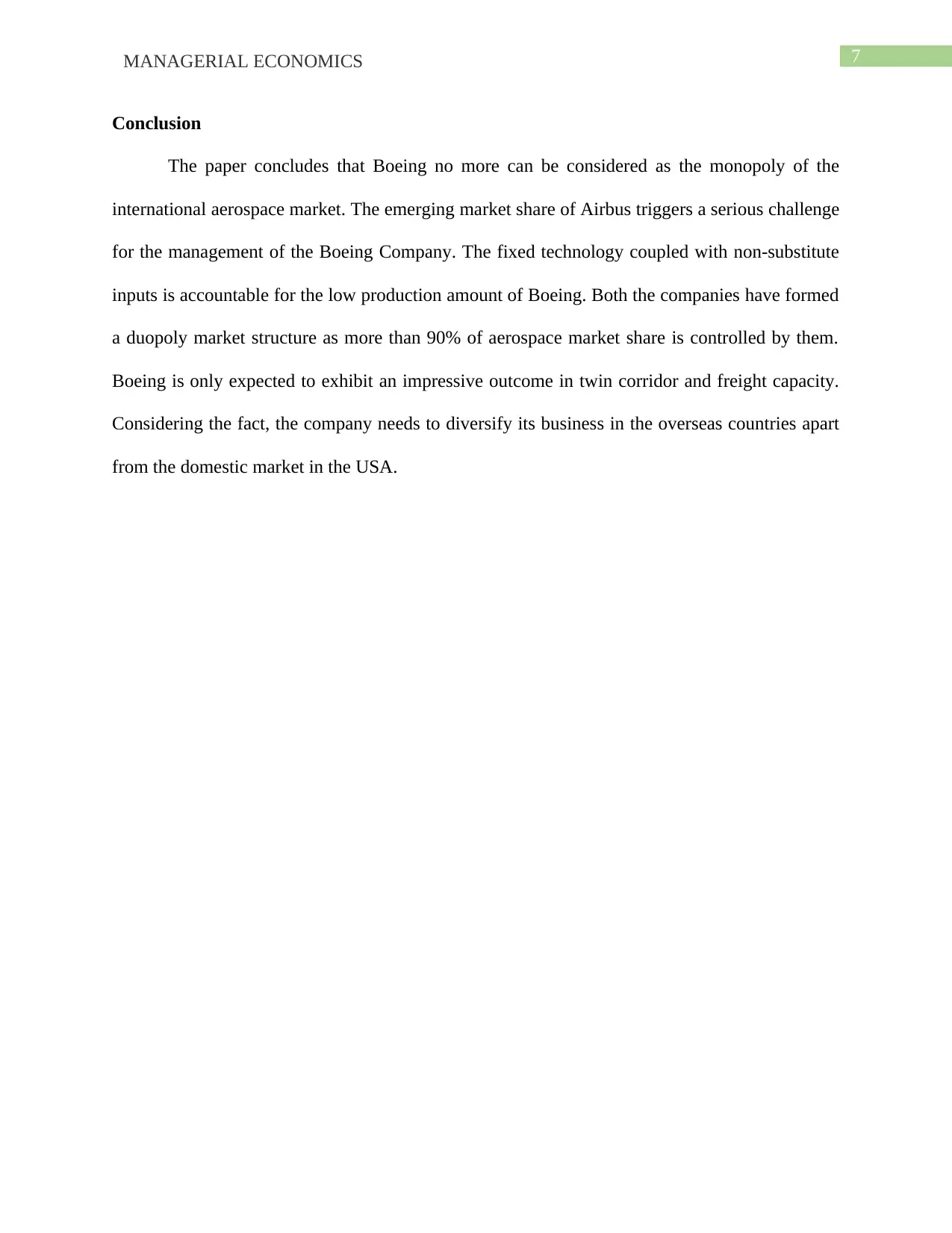
7MANAGERIAL ECONOMICS
Conclusion
The paper concludes that Boeing no more can be considered as the monopoly of the
international aerospace market. The emerging market share of Airbus triggers a serious challenge
for the management of the Boeing Company. The fixed technology coupled with non-substitute
inputs is accountable for the low production amount of Boeing. Both the companies have formed
a duopoly market structure as more than 90% of aerospace market share is controlled by them.
Boeing is only expected to exhibit an impressive outcome in twin corridor and freight capacity.
Considering the fact, the company needs to diversify its business in the overseas countries apart
from the domestic market in the USA.
Conclusion
The paper concludes that Boeing no more can be considered as the monopoly of the
international aerospace market. The emerging market share of Airbus triggers a serious challenge
for the management of the Boeing Company. The fixed technology coupled with non-substitute
inputs is accountable for the low production amount of Boeing. Both the companies have formed
a duopoly market structure as more than 90% of aerospace market share is controlled by them.
Boeing is only expected to exhibit an impressive outcome in twin corridor and freight capacity.
Considering the fact, the company needs to diversify its business in the overseas countries apart
from the domestic market in the USA.
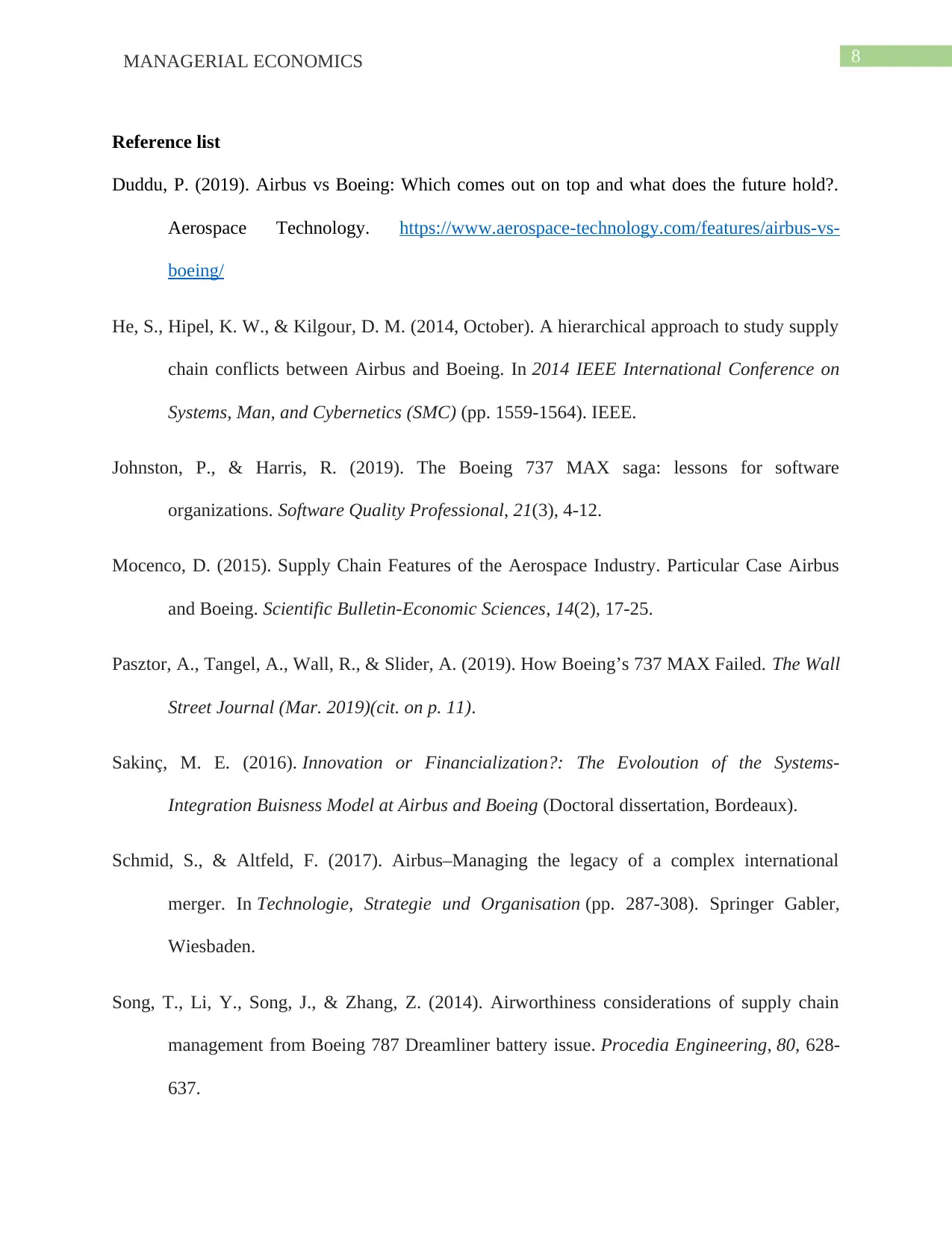
8MANAGERIAL ECONOMICS
Reference list
Duddu, P. (2019). Airbus vs Boeing: Which comes out on top and what does the future hold?.
Aerospace Technology. https://www.aerospace-technology.com/features/airbus-vs-
boeing/
He, S., Hipel, K. W., & Kilgour, D. M. (2014, October). A hierarchical approach to study supply
chain conflicts between Airbus and Boeing. In 2014 IEEE International Conference on
Systems, Man, and Cybernetics (SMC) (pp. 1559-1564). IEEE.
Johnston, P., & Harris, R. (2019). The Boeing 737 MAX saga: lessons for software
organizations. Software Quality Professional, 21(3), 4-12.
Mocenco, D. (2015). Supply Chain Features of the Aerospace Industry. Particular Case Airbus
and Boeing. Scientific Bulletin-Economic Sciences, 14(2), 17-25.
Pasztor, A., Tangel, A., Wall, R., & Slider, A. (2019). How Boeing’s 737 MAX Failed. The Wall
Street Journal (Mar. 2019)(cit. on p. 11).
Sakinç, M. E. (2016). Innovation or Financialization?: The Evoloution of the Systems-
Integration Buisness Model at Airbus and Boeing (Doctoral dissertation, Bordeaux).
Schmid, S., & Altfeld, F. (2017). Airbus–Managing the legacy of a complex international
merger. In Technologie, Strategie und Organisation (pp. 287-308). Springer Gabler,
Wiesbaden.
Song, T., Li, Y., Song, J., & Zhang, Z. (2014). Airworthiness considerations of supply chain
management from Boeing 787 Dreamliner battery issue. Procedia Engineering, 80, 628-
637.
Reference list
Duddu, P. (2019). Airbus vs Boeing: Which comes out on top and what does the future hold?.
Aerospace Technology. https://www.aerospace-technology.com/features/airbus-vs-
boeing/
He, S., Hipel, K. W., & Kilgour, D. M. (2014, October). A hierarchical approach to study supply
chain conflicts between Airbus and Boeing. In 2014 IEEE International Conference on
Systems, Man, and Cybernetics (SMC) (pp. 1559-1564). IEEE.
Johnston, P., & Harris, R. (2019). The Boeing 737 MAX saga: lessons for software
organizations. Software Quality Professional, 21(3), 4-12.
Mocenco, D. (2015). Supply Chain Features of the Aerospace Industry. Particular Case Airbus
and Boeing. Scientific Bulletin-Economic Sciences, 14(2), 17-25.
Pasztor, A., Tangel, A., Wall, R., & Slider, A. (2019). How Boeing’s 737 MAX Failed. The Wall
Street Journal (Mar. 2019)(cit. on p. 11).
Sakinç, M. E. (2016). Innovation or Financialization?: The Evoloution of the Systems-
Integration Buisness Model at Airbus and Boeing (Doctoral dissertation, Bordeaux).
Schmid, S., & Altfeld, F. (2017). Airbus–Managing the legacy of a complex international
merger. In Technologie, Strategie und Organisation (pp. 287-308). Springer Gabler,
Wiesbaden.
Song, T., Li, Y., Song, J., & Zhang, Z. (2014). Airworthiness considerations of supply chain
management from Boeing 787 Dreamliner battery issue. Procedia Engineering, 80, 628-
637.
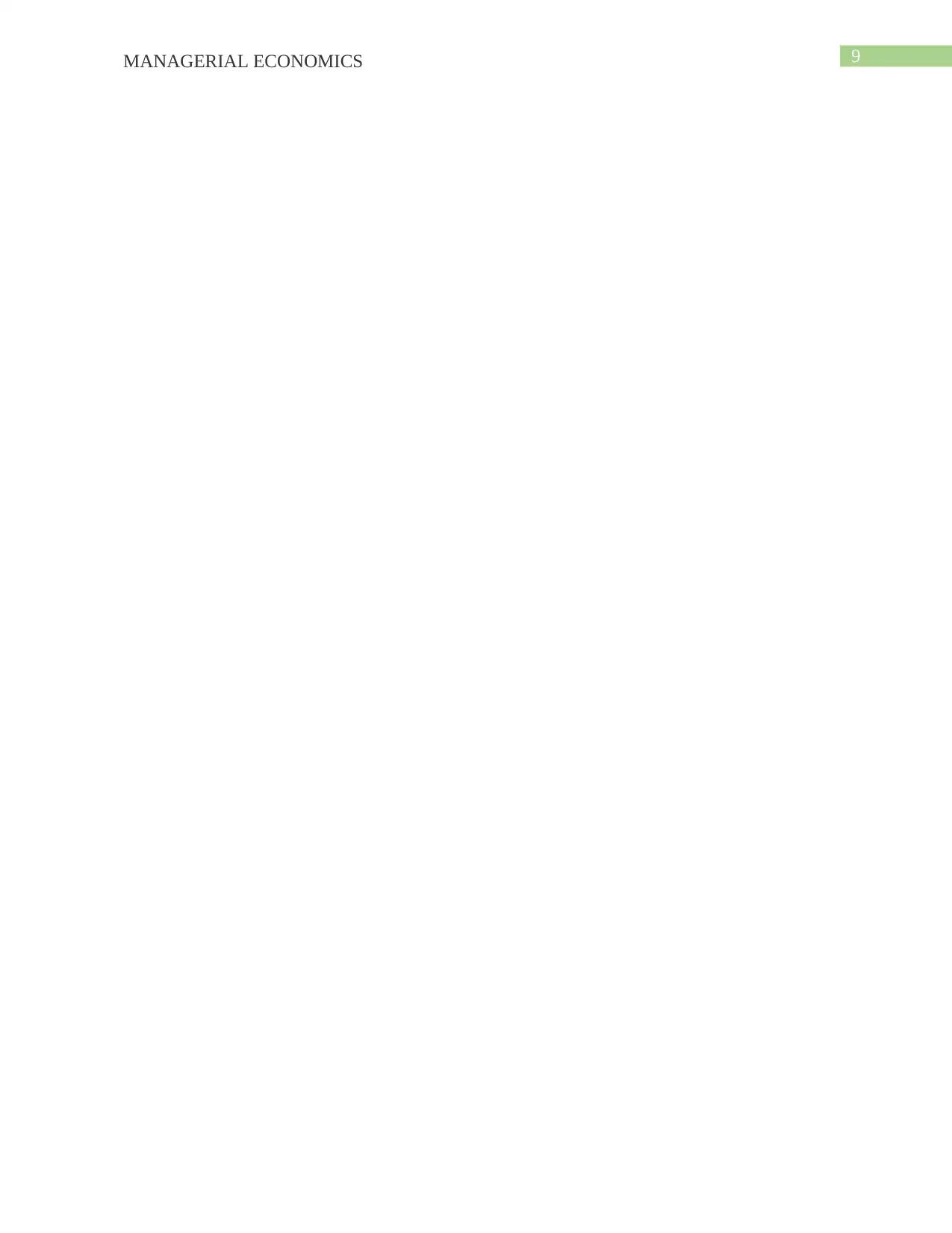
9MANAGERIAL ECONOMICS
1 out of 10
Related Documents
Your All-in-One AI-Powered Toolkit for Academic Success.
+13062052269
info@desklib.com
Available 24*7 on WhatsApp / Email
![[object Object]](/_next/static/media/star-bottom.7253800d.svg)
Unlock your academic potential
© 2024 | Zucol Services PVT LTD | All rights reserved.





